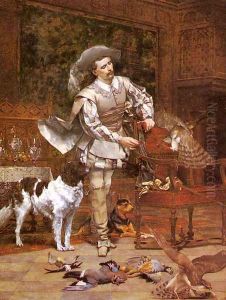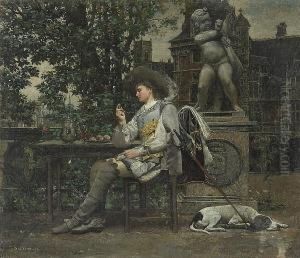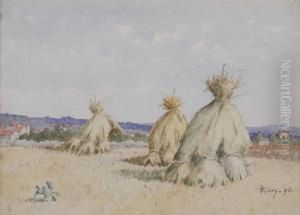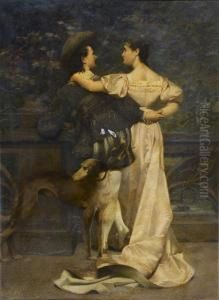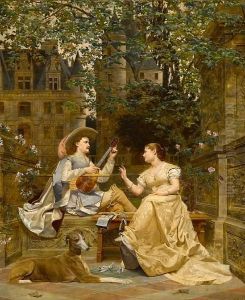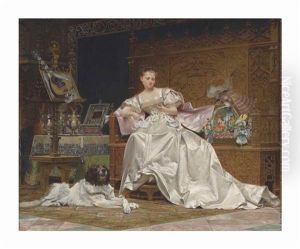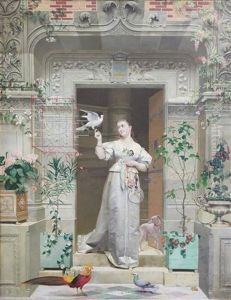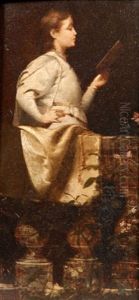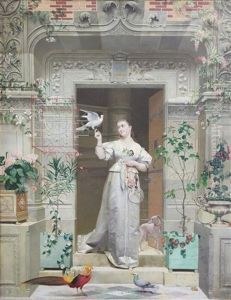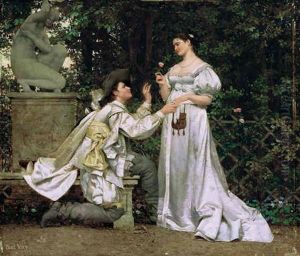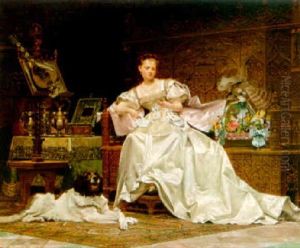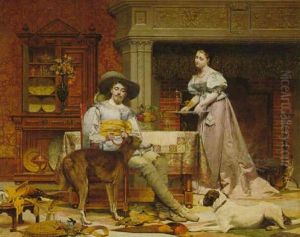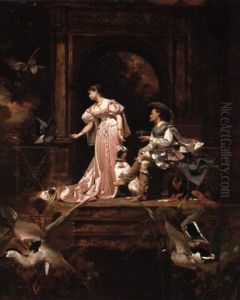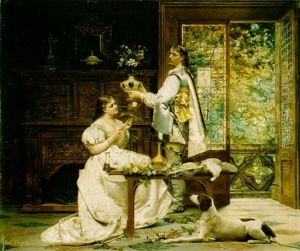Paul Alphonse Viry Paintings
Paul Alphonse Viry was a French artist known for his historical and genre paintings, as well as his skill as a portraitist. Born on October 6, 1832, in Chatillon-sur-Seine, France, Viry developed an interest in art at an early age. He pursued his passion for painting by studying at the École des Beaux-Arts in Paris, where he was a student of renowned artists such as François-Édouard Picot and Alexandre Cabanel.
Viry's academic training provided him with a solid foundation in neoclassical painting techniques, which he later adapted to suit the taste of the Second Empire in France. His work often reflected a romanticized view of history and mythology, which was a popular theme among artists and patrons during the mid-to-late 19th century. He exhibited his paintings at the Paris Salon, the official art exhibition of the Académie des Beaux-Arts in Paris, where he gained recognition and accolades for his work.
Throughout his career, Viry received various honors, including medals at the Paris Salon. His paintings were characterized by their fine detail, vivid color palette, and the emotional depth of the figures he portrayed. Viry's portraits, in particular, were noted for their lifelike representation and the ability to capture the character and personality of his subjects.
In addition to his success as a painter, Viry contributed to the art community as an educator. He taught at various institutions, passing on his knowledge and techniques to the next generation of artists. His influence extended beyond his own work, helping to shape the artistic landscape of his time.
Paul Alphonse Viry's legacy is preserved in the collections of museums and galleries, where his paintings continue to be appreciated for their historical significance and artistic merit. He died on February 6, 1907, in Paris, leaving behind a body of work that remains a testament to his skill as an artist and his contribution to the world of French art.
